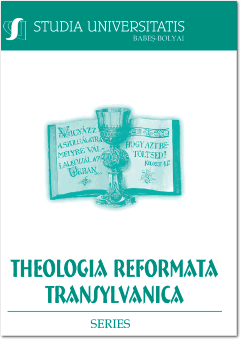AZ ÚJSZÖVETSÉGI „MEGBÉKÉLÉS” FOGALOM ELŐFORDULÁSAINAK ÉS JELENTÉSEINEK ÁTTEKINTÉSE
SURVEY OF THE MEANINGS AND OCCURRENCES OF THE TERMINOLOGY OF RECONCILIATION IN THE NEW TESTAMENT
Author(s): Lehel LészaiSubject(s): History of Church(es), Biblical studies, Systematic Theology, Pastoral Theology
Published by: Studia Universitatis Babes-Bolyai
Keywords: reconciliation; rapprochement; peace; ease; subsides;
Summary/Abstract: Reconciliation may happen on three levels. The first one is to be reconciled with God. In this matter, God himself helps us, who took the first steps towards us after we had left him and had turned our back to him. He sent his only Son, who gave up his life in order to reconcile us with his Father, to restore the broken connection, relationship, and peace. The second level is to be reconciled with friends. In this matter, it could help us a great matter, if one was reconciled with the Creator. To be reconciled with God means a task for human beings, as they have to be at peace with each other. Reconciliation with others may happen outwards and inwards. It happens outwards, when the relationship is handled with God, with the other, and with oneself. We speak about inwards reconciliation, when it happens between husband and wife, between friends (relatives, neighbours), between principal and subaltern, or enemies. The third level is to be reconciled with oneself. This may be the hardest task, because one has to fight oneself: you have difficult issues to let go, you have to be at peace with yourself in order to serve God and your neighbour as your Creator requires from you.
Journal: Studia Universitatis Babeș - Bolyai Theologia Reformata Transylvanica
- Issue Year: 65/2020
- Issue No: 1
- Page Range: 83-100
- Page Count: 18
- Language: Hungarian

